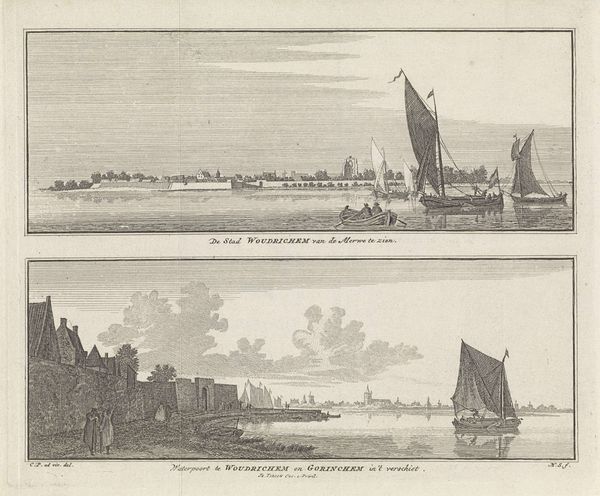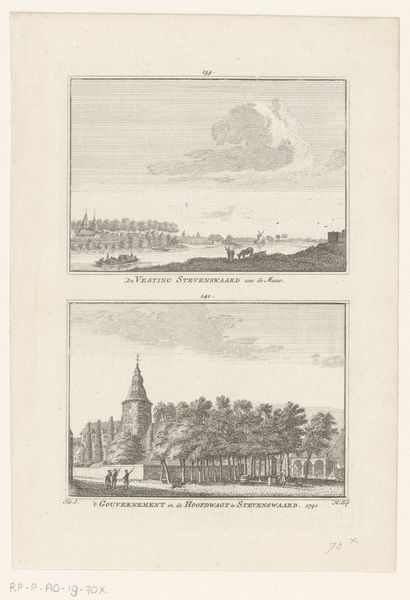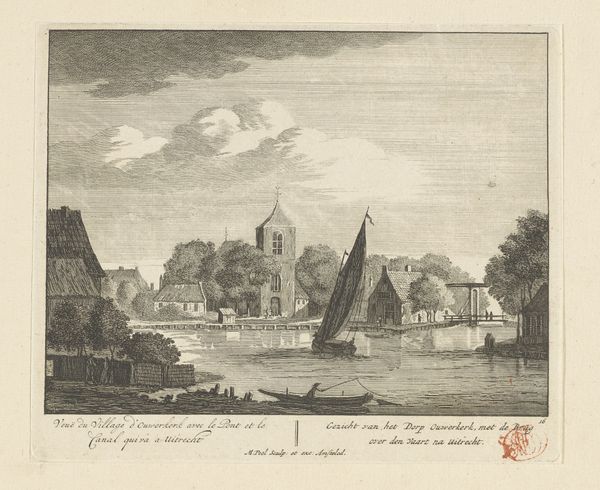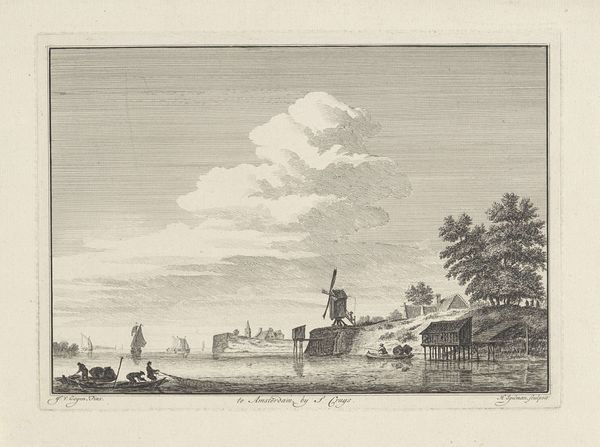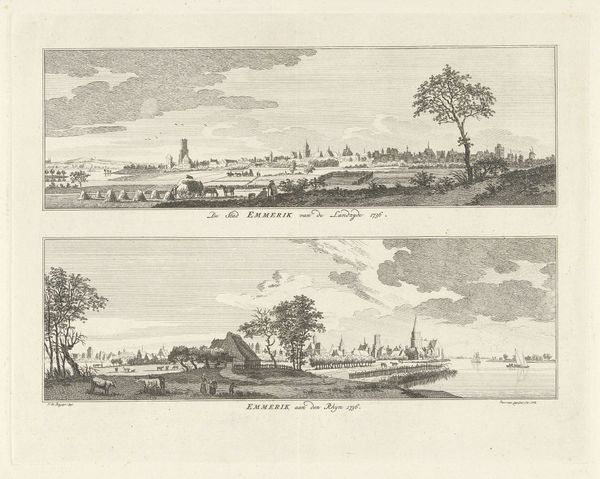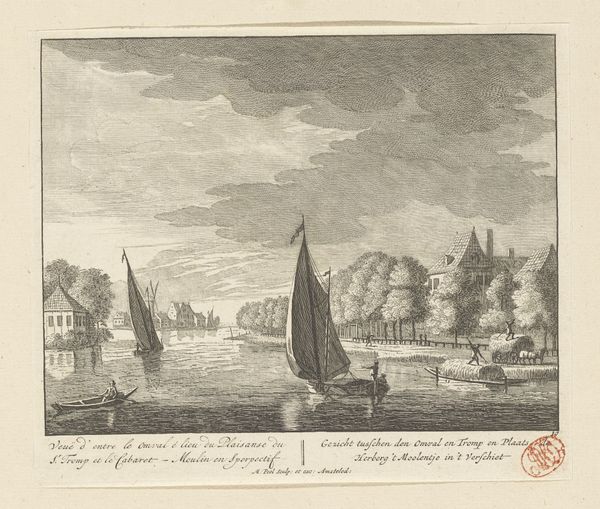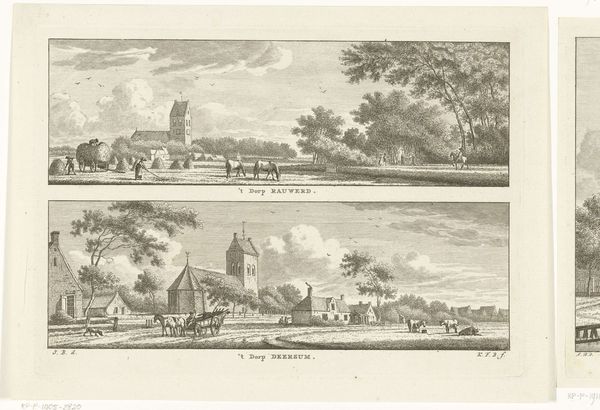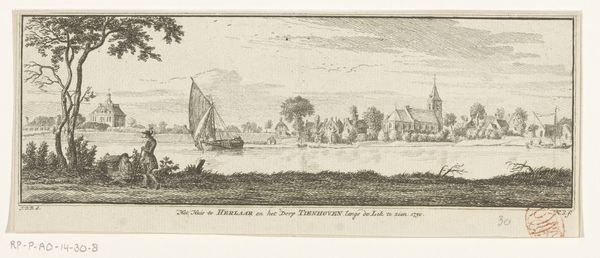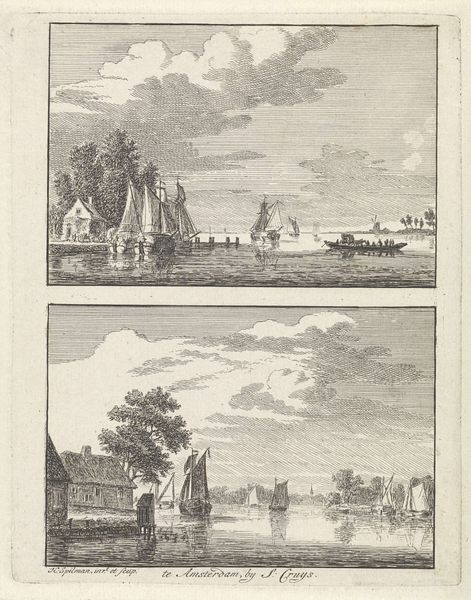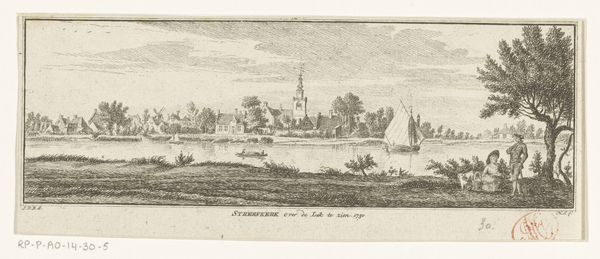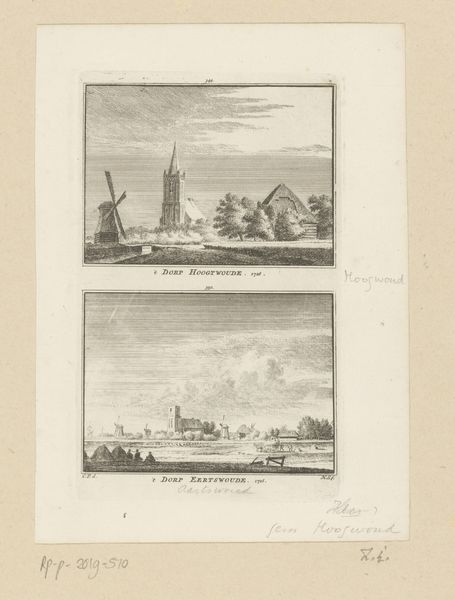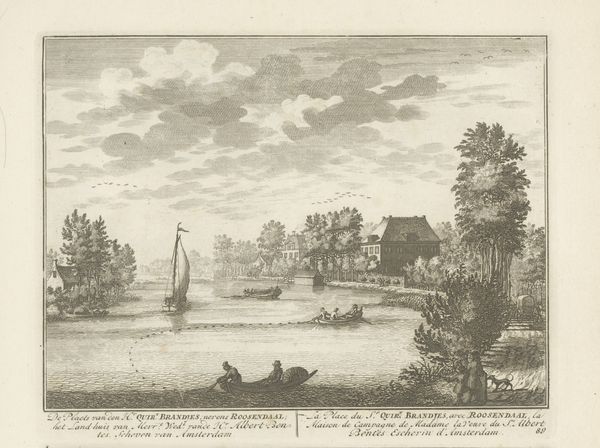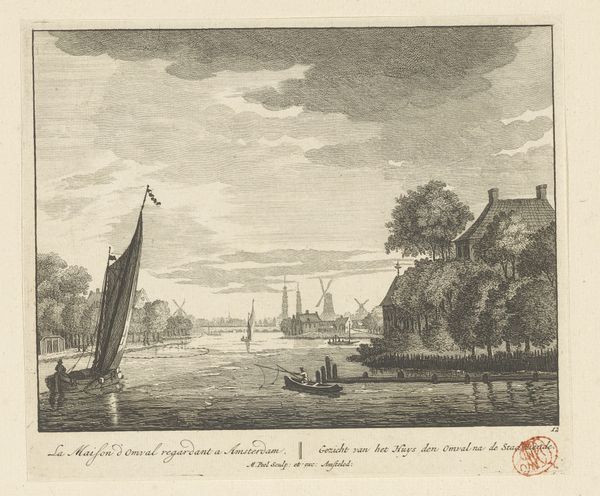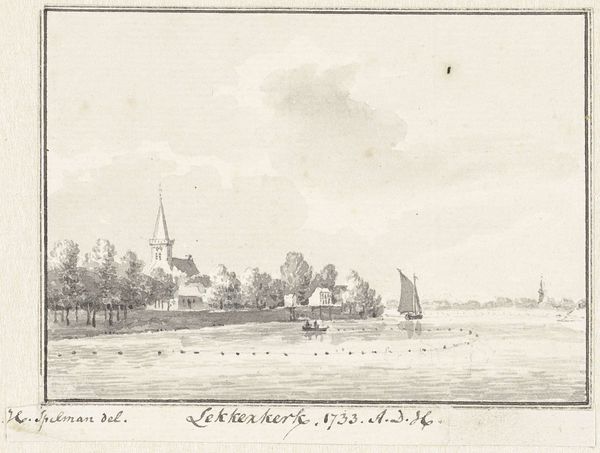
print, engraving
#
baroque
#
dutch-golden-age
# print
#
old engraving style
#
landscape
#
cityscape
#
engraving
Dimensions: height 170 mm, width 213 mm
Copyright: Rijks Museum: Open Domain
Editor: Here we have Hendrik Spilman's "Two Views of Loevestein Castle," made in 1749, an engraving on paper. It’s interesting how similar, yet distinct, the two depictions of the castle are. What jumps out to you about this piece? Curator: The engraving technique itself speaks volumes. Look at the labor involved, the meticulous lines carved into the metal plate, replicated for mass consumption. It wasn't about unique artistic expression in the modern sense, but a skilled trade. Notice also how the varying line weights create the illusion of depth. What materials do you think Spilman used? Editor: Well, copper for the plate, certainly. And specific inks, likely chosen for their durability, given the print's purpose of wide distribution. It’s not just art, it's information dissemination. Does the choice of those materials imply the existence of a broader material economy that sustains this type of creative labor? Curator: Absolutely. The availability of copper, the skill of the engraver, the printing press itself – these are all dependent on complex economic systems and trade networks. It points towards a growing middle class with disposable income for such prints, feeding into artistic production itself. Consider where the paper came from. Editor: Right, it wasn't just pulling art out of thin air. The materials themselves carry a history of resource extraction and skilled manufacturing. I hadn’t thought about it like that before, focusing on how the meaning is made materially. Thanks for the different point of view! Curator: Of course. And keep in mind that consumption perpetuates it all.
Comments
No comments
Be the first to comment and join the conversation on the ultimate creative platform.
